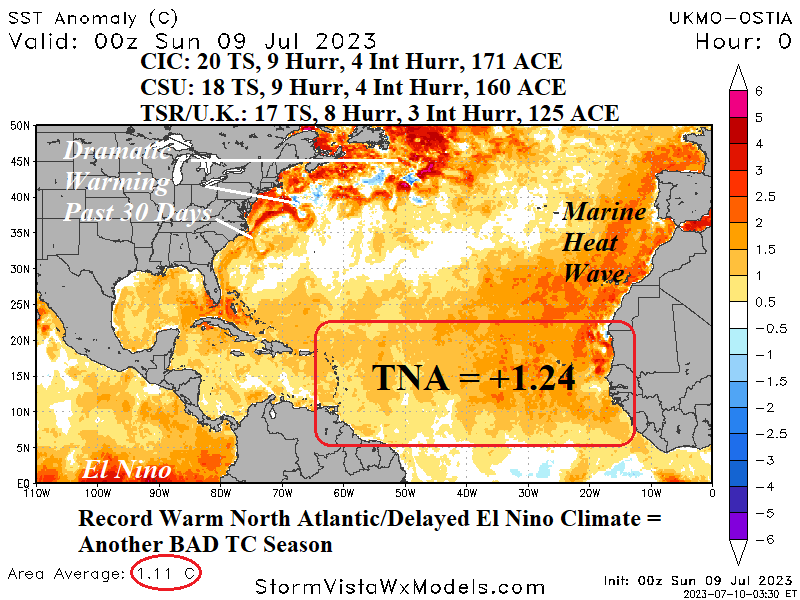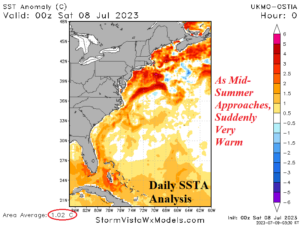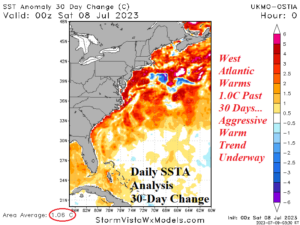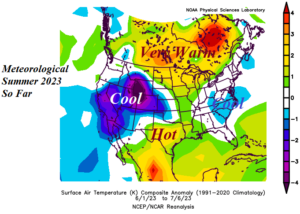
Atmospheric El Nino Lagging Oceanic El Nino
07/06/2023, 8:21 am EDT
Significant Increase in Projected North Atlantic Basin 2023 Seasonal Hurricane Forecast
07/10/2023, 8:03 am EDT

Fig. 1-2: Daily western North Atlantic basin SSTA analysis and the 30-day change.
Discussion: Daily SSTA analysis off the U.S. East Coast reveal a dramatic warm-up. Currently, the western North Atlantic basin is a whopping +1.02C with warmest anomalies off the Northeast Corridor coastline (Fig. 1). Other very warm SSTA observations are indicated from the Gulf of Mexico to the Bahamas. During the past 30 days, the warm signature indicated now has developed (Fig. 2). Previously, waters off the Northeast Coast were unusually cool due to the presence of a westward displaced North Atlantic warm hole (NAWH).
The NAWH presence has biased the East U.S. cool to near normal for meteorological summer so far (Fig. 3). However, the warm-up of the western North Atlantic is anticipated and offers support for the “Bermuda High” to extend westward and deliver a hot and humid August for the entire Northeast U.S. Corridor (Fig. 4). PJM-East and NEPOOL are hit hardest with heatwaves and high humidity. Also, a potential hazard is strength of any tropical cyclones nearing the U.S. East Coast maintain intensity or possibly strengthening due to increasing upper ocean heat. So far during summer 2023, hot weather focus has been confined to ERCOT and recently CAISO. However, the high electricity demand Northeast U.S. Corridor regime is likely to develop for August (if not sooner).


Fig. 3-4: Meteorological summer 2023 temperature anomalies so far and the Climate Impact Company August 2023 U.S. temperature anomaly outlook.
As an aside, the North Atlantic basin has what appears to be a possible record warm signature for mid-to-late summer. Using Atlantic multi-decadal oscillation AMO) the warmest mid-to-late summer North Atlantic basin SSTA on record are 1998, 2005, 2010, and 2016. Interestingly, each year marked departing El Nino and La Nina ahead – just the opposite of this year. The month of August in each analog year was hot in the East (and wet in the Central U.S.).
![Climate-Impact-Company-logo-sm[1]](https://climateimpactcompany.com/wp-content/uploads/2023/08/Climate-Impact-Company-logo-sm1.png)
